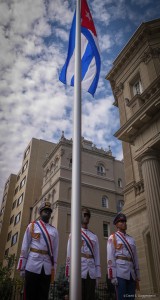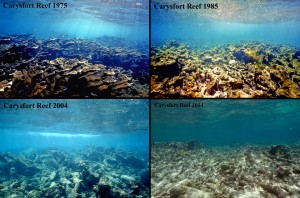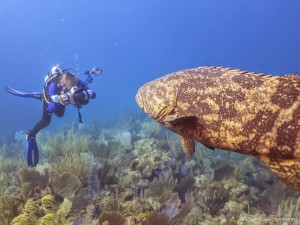PBS NewsHour Features Ocean Doctor’s Work in Cuba
/in Conservation, Cuba, Cuba Research & Conservation, Featured/by Ocean DoctorPeople’s Climate March 2017 – Washington, DC: Photo Gallery
/in Conservation, Featured/by Ocean DoctorMarch for Science 2017 – Washington, DC: Photo Gallery
/in Conservation, Cuba, Featured/by Ocean DoctorFinding Hope for the Invisible Island
/in Conservation, Cuba, Cuba Research & Conservation, Featured/by Ocean DoctorHow Castro and Cousteau’s Legendary Friendship Preserved Cuba’s Oceans
/in Conservation, Cuba, Cuba Research & Conservation, Featured/by Ocean DoctorThe Largest Protected Place on the Planet
/in Conservation, Featured, News/by Ocean DoctorOcean Doctor president, Dr. David E. Guggenheim, spoke to CNN International about President Obama’s creation of “the largest ecologically protected area on the planet” as described by the Washington Post, when he expanded the Papah?naumoku?kea Marine National Monument in Hawaii to encompass more than half a million square miles. Interestingly, President Obama and his predecessor, President George W. Bush, who established the monument, share this important legacy. See the interview here.
Cuban Embassy Opens in DC After 54 Years: Will Cuba Remain the ‘Green Jewel’ of the Caribbean?
/in Conservation, Cuba, Cuba Research & Conservation, Featured, Ocean Doctor's Reflections/by Ocean Doctor
The Cuban flag flying in Washington, DC for the first time in 54 years, signaling the reopening of the Cuban Embassy and normalization of relations with the U.S. (Photo: David E. Guggenheim)
With each tug of the rope by Cuban Foreign Minister Bruno Rodriguez, the Cuban flag inched upward, finding a slight breeze and proudly showed off its brilliant colors of red, white and blue to the 500 or so onlookers. The Cubans and Cuban-Americans—never known for their silence at public events—beamed with national pride and shouted with joy as the flag inched up, “Fidel, Fidel!” Countless eyes filled with tears. Many embraced. The world was changing before us. The Cuban flag flew in Washington, DC for the first time in 54 years, signaling the reopening of the Cuban Embassy and normalization of relations with the U.S.
Inside at the embassy at the reception that followed, we hoisted mojitos and exchanged congratulations. But a number of us have long anticipated this moment with both joy and worry, realizing that the U.S. could become a greater threat to Cuba as its friend than it ever was as its enemy.
Read the full post at EcoWatch.com
OMG I Thought You Were Dead!
/in Conservation, Cuba, Cuba Research & Conservation, Featured, Ocean Doctor's Reflections/by Ocean Doctor
A dramatic time series of photos documenting the 95 percent loss of coral cover from Carysfort Reef, Key Largo, Florida since 1975. The photos capture the loss of a once thriving colony of elkhorn coral, Acropora palmata (Photos: Phil Dustan)
I shouted with euphoric joy through my regulator, 20 feet underwater. I can only imagine how wide my eyes were. It must have been difficult to discern between an expression of delighted surprise and a textbook example of wide-eyed diver panic. My eyes were transfixed on an old friend with a funny name whom I hadn’t laid eyes on in years. I had heard he was dead – or at least gravely ill. But there in front of me, larger than life, vibrant and embracing the sun, my friend was very much alive and healthy, clearly enjoying the good life in Cuba.
Several years earlier, I joined an expedition to explore a corner of the Gulf of Mexico I had only heard about from colleagues: The magnificent coral reef ecosystem of Veracruz, Mexico. Seated inside the DeepRover submersible with great anticipation for a vibrant reef that lay below me, I was lowered from the deck of a Mexican Navy ship into the warm blue waters below and radioed the ship that I was going to begin my descent.
Read the full post at EcoWatch.com
What Becomes of Cuba After the Embargo is Lifted?
/in Conservation, Cuba, Cuba Research & Conservation, Featured, Ocean Doctor's Reflections/by Ocean Doctor
A Critically Endangered Goliath Grouper greets a tourist photographer in Cuba’s Gardens of the Queen National Park. Environmental economics demonstrated that conservation and ecotourism would result in more revenue than commercial fishing. (Photo: David E. Guggenheim)
When a foreigner sets foot in Cuba, it immediately becomes clear that this magical island is profoundly unique and has developed drastically differently than any other country in Latin America and the Caribbean. And for those who venture into its verdant mountains or below its aquamarine waves, a striking revelation awaits: Just as the fifties-era Chevys and horse-drawn buggies portray an island seemingly frozen in time, so, too, do its exceptionally healthy and vibrant ecosystems illustrate that Cuba may have picked the perfect time in history not to follow the path of its neighbors. Indeed the past half century has seen a tragic and unprecedented decline in Caribbean coastal and marine ecosystems.
Read the full post at EcoWatch.com
Fax: +1 (202) 888-3329
P.O. Box 53090
Washington, DC 20009
Just Released: The Remarkable Reefs of Cuba: Stories of Hope from the Ocean Doctor by Dr. David E. Guggenheim, President of Ocean Doctor

